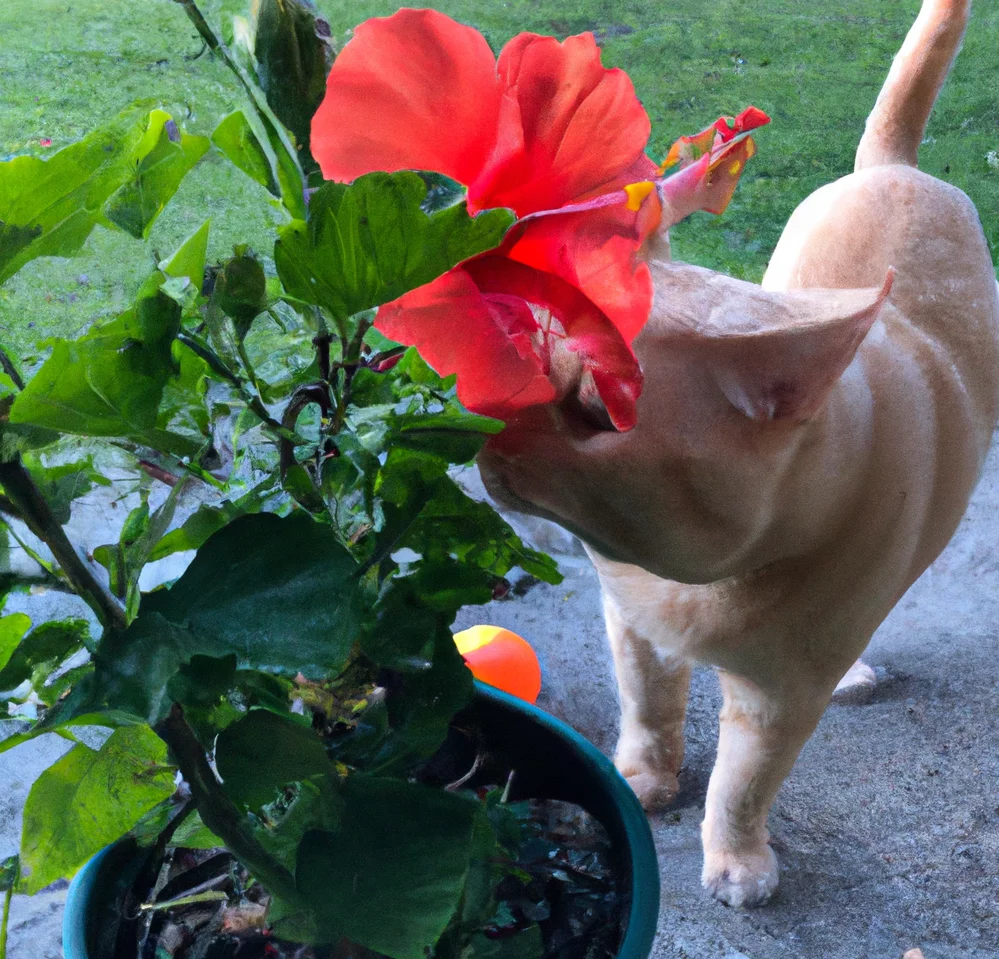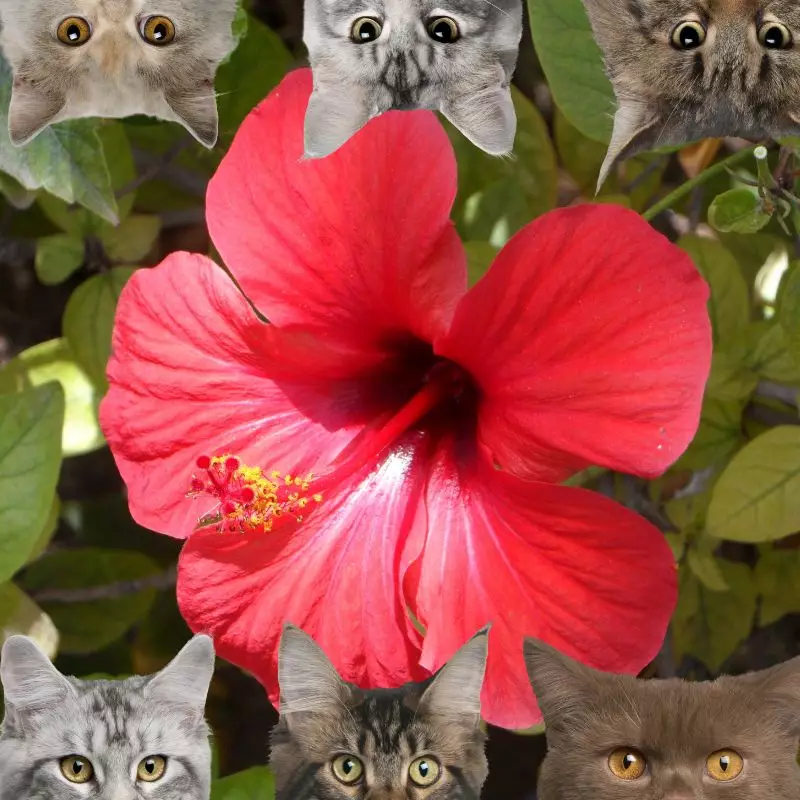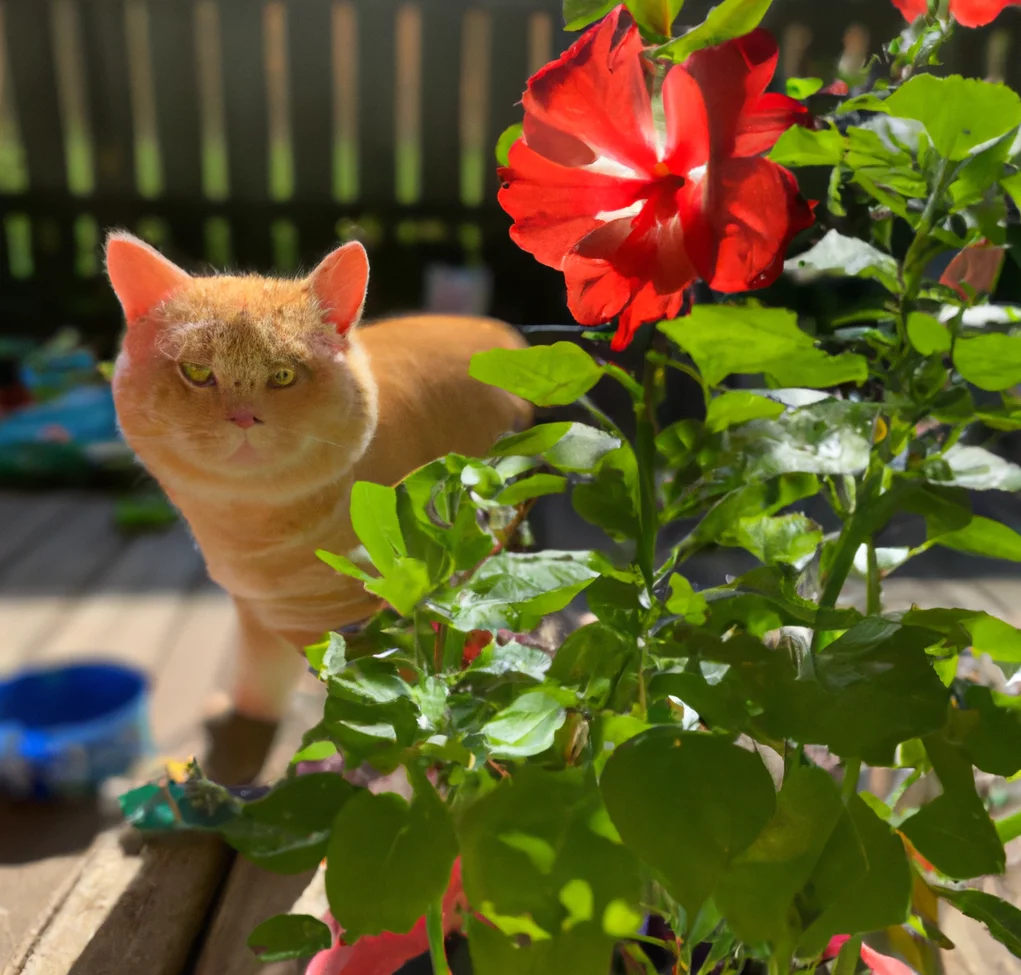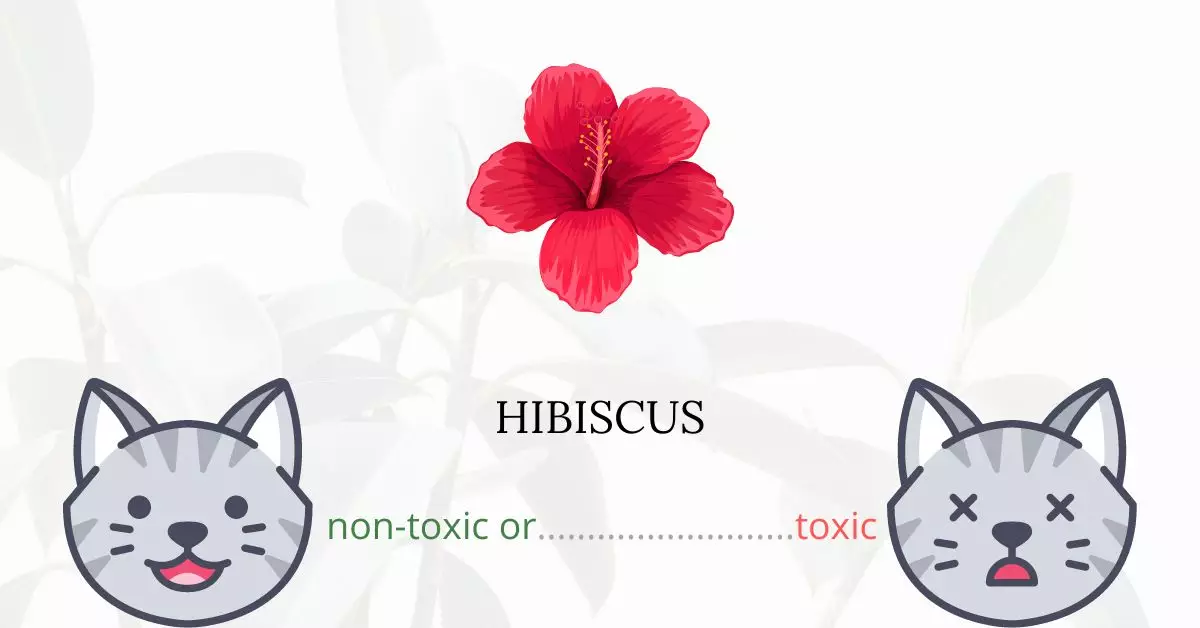Hibiscus is not categorically poisonous to cats. However, it’s important to note that certain hibiscus species may be mildly harmful. The roots, stems, and blooms of these species contain calcium oxalate, which can potentially cause discomfort to a cat’s digestive system, resulting in symptoms ranging from negligible to mild poisoning. In most cases, when hibiscus poisoning does occur in cats, it is a minor condition that is responsive to treatment.
This article has been crafted with the expertise and input of a team of experienced DVMs (doctors of veterinary medicine). Their invaluable insights and experience have equipped us to provide accurate and current information concerning the potential risks associated with hibiscus and its impact on feline health. Furthermore, in our commitment to authenticity and accuracy, we have thoroughly researched high-authority sources such as the ASPCA and PetMD for each plant discussed, ensuring that our readers receive the most reliable information.
Can Cats Eat Hibiscus?

It’s probably not a problem if your cat chews on the hibiscus leaves. Despite the fact that hibiscus is non-toxic, it is still best to avoid consuming it in large quantities. There is evidence that if a dog or cat takes this Hibiscus in large amounts, they are likely to have diarrhea, nausea, vomiting, and loss of appetite.
What is Hibiscus?

Hibiscus is a species of blooming plant known as Hibiscus syriacus and belongs to the Malvaceae family of plants. It is indigenous to Korea, south-central China, and southeast China, but has been widely imported throughout much of Asia. Because it was taken from gardens in Syria, it was given the name “syriacus.”
It is a hardy deciduous shrub. It has a vase-like upright structure and can grow to a height of 2-4 meters. It produces enormous trumpet-shaped blooms with noticeable yellow-tipped white stamens. The flowers are frequently pink, although they can also be white, pale pink or a dark pink that almost looks purple. Individual blooms barely survive a day before dying. However, the shrub’s new growth is covered with countless buds that generate prodigious flowering over a long summer blooming period. The hibiscus grows in moist but well-drained soil that is a blend of sand, clay, chalk, and loam.
Keeping Cats Away From Hibiscus

Ensure that your cat has a variety of safe options, like enriching toys to play with and cat grass to chew on. The use of cat puzzle feeders as an amusement can be enjoyable.
Covering the area surrounding your outside plants with rocks or pebbles is a wonderful technique to deter your cat from eating them. Cats dislike uneven, rough surfaces, so choose pebbles that are difficult for them to walk on.
Use a pet deterrent spray if you don’t have a fence around your hibiscus or if you have any potted plants that you wish to keep safe. This kind of spray is secure and simple to apply. Your cat will avoid any items you use it on because of its offensive flavor and aroma.
Plants to Avoid For Your Cats
If you are a cat owner and unsure if the plants growing in your yard are harmful to your cats, check out this list of toxic plants for cats. You can also check our list of non-toxic plants for cats.





